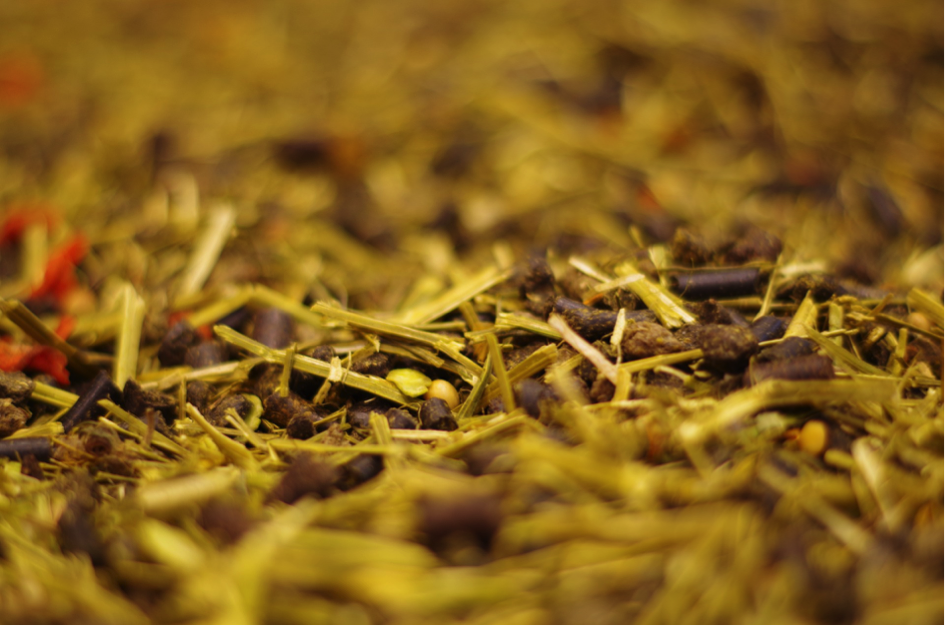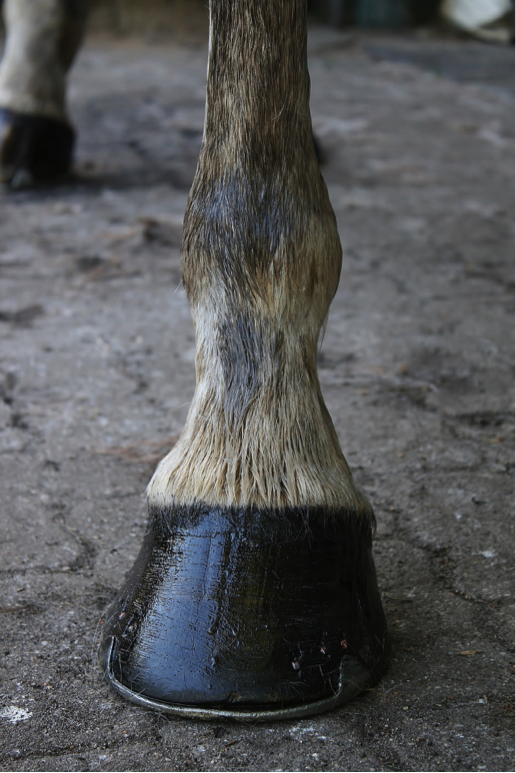

The Seaver team takes a break for the holidays
Orders placed between December 24 and January 5 will be shipped starting January 6.
lundi, 8 avril, 2019
L’arrivée du printemps après l’hiver est une période de transition qui peut paraître banale mais qui demande beaucoup d’énergie à votre cheval. Voici nos conseils pour vous aider à appréhender ce changement de saison en toute sérénité :

Chaque année, au printemps mais également à l’automne, les chevaux enfilent leur nouvelle robe et remplacent quasiment tout leur pelage, soit une vraie performance. Voilà pourquoi votre monture peut sembler fatiguée à l’approche des beaux jours.
Si vous en avez la possibilité, le mieux est de tondre votre cheval entièrement ou partiellement avant le printemps pour que la période de mue soit moins contraignante. Vous serez également moins embêté avec les questions de transpiration et de séchage de votre cheval. Veillez tout de même à couvrir votre cheval en fonction des températures. Les températures en journée augmentent progressivement mais les nuits restent fraîches ce qui peut vous amener à changer de couverture plusieurs fois par jour.
Notez que la robe est le baromètre de la bonne santé de votre cheval. Si votre monture a le poil un peu terne et rêche, pensez à lui donner de l’huile de foie de morue qui est très riche en vitamine A et D. La vitamine A permet d’hydrater la peau et aidera votre cheval à retrouver une robe brillante.
Pour certains chevaux le rythme des compétitions ralentit durant l’hiver et pour d’autres, il va même jusqu’à s’interrompre. Le planning de travail se retrouve allégé et la ration alimentaire réduite, entrainant ainsi une diminution de l’apport en minéraux et vitamines. La fin de l’hiver est également synonyme de mue chez votre cheval et cette période peut parfois s’accompagner d’un affaiblissement du système immunitaire. Des aliments complémentaires peuvent aider vos compagnons à faire face à cette période de transition et nous allons voir pourquoi.
Quelques semaines avant de retrouver les terrains de concours, les chevaux reprennent progressivement une cadence de travail plus soutenue. Pour certains, la reprise du travail à cette période peut s’avérer une phase compliquée. Il peut donc être bénéfique de les accompagner en terme d’alimentation pour les aider à bien supporter ce nouveau rythme et à développer leur masse musculaire.
Dans cette phase de remise en route, il s’agit principalement d’équilibrer la ration énergétique avec les dépenses d’énergie liées à l’activité du cheval. N’oubliez pas que la principale source d’énergie chez le cheval sont les parois végétales (aussi communément appelées « fibres ») des fourrages et la seconde source, l’amidon, que l’on retrouve dans les céréales. Dans un second temps, on cherchera à rééquilibrer les apports en minéraux et vitamines.

Si votre cheval venait à manquer de masse musculaire, une supplémentation en protéines peut être recommandée. Il sera alors nécessaire de maintenir un niveau d’activité suffisant en même temps que la supplémentation. Les options pour complémenter votre cheval sont nombreuses mais n’oubliez pas que chaque athlète est spécifique. N’hésitez pas à vous rapprocher de votre vétérinaire afin de choisir la formule la plus adaptée en fonction de votre cheval et des objectifs fixés pour la saison.
Pour certains chevaux, la mue peut s’accompagner d’un petit coup de mou. En effet, pour former un nouveau pelage, l’organisme de votre cheval a besoin de beaucoup d‘énergie, et de nombreux éléments comme les acides aminés, les minéraux, les vitamines et les oligoéléments. Le système immunitaire se retrouve affaiblit en cas de manque de ces éléments. Une cure d’aliments complémentaires multivitaminés sur une période fera donc le plus grand bien et apportera les oligo-éléments et nutriments nécessaires pour garder un bon état général et booster le système immunitaire de votre cheval.
Encore une fois, il existe de nombreux aliments complémentaires et nous vous recommandons de demander conseil à votre vétérinaire afin de choisir la solution la plus adaptée à votre cheval.
Les sabots méritent une attention toute particulière en cette saison. Si votre cheval a passé l’hiver dehors, il risque d’avoir des pieds mous à cause de l’humidité.
Profitez des sessions de douche pour nettoyer les soles. Après avoir curé les pieds, servez vous d’une brosse à pied dure pour récurer les lacunes. Une fois bien sèches, utilisez de l’onguent fortifiant qui contient un peu de goudron de pin. Si votre cheval à les fourchettes vraiment très molles voire malodorantes, un goudron de pin les aidera à durcir.

Le printemps est également le moment de penser à changer d’onguent. Si vous utilisiez un onguent noir pendant l’hiver, passez à un onguent blond ou vert pour le printemps et l’été. Ils contiennent de l’huile de laurier ou de la lanoline qui offrent un fort pouvoir hydratant pour les sabots.
Une cure de biotine sera également idéale car elle a l’avantage d’être excellente pour le poil et pour les pieds. La biotine est un antioxydant naturel et est remplie de vitamine E.
La majorité des chevaux ont été confiné à l’intérieur et nourri avec une ration foin/grain durant plusieurs mois de l’hiver. Comme tout changement alimentaire, le passage à l’herbe fraiche et luxuriante des pâturages du printemps doit se faire graduellement afin d’éviter les problèmes digestifs.
L’herbe du printemps est un aliment très riche en nutriments et très facile à digérer. Les chevaux ont tendance à surconsommer à cause de l’appétence de cette verdure luxuriante, ce qui peut mener à d’importants problèmes comme, les coliques gazeuses, les diarrhées et les fourbures. Voici quelques petits conseils pour aider votre cheval à profitez au maximum de ses sorties printanières et minimiser les effets indésirables :

Portez une attention particulière aux plantes toxiques. Au printemps, les jeunes pousses sont parfois très différentes de la plante adulte, ce qui les rend difficiles à identifier. Soyez donc vigilants, ouvrez l’oeil dans vos pâtures et renseignez-vous.
Outre le développement de la masse musculaire, il faut aussi veiller à l’état général de votre cheval et aux petites défaillances qui peuvent surgir à la sortie de l’hiver, notamment dans l’appareil locomoteur. Des petites courbatures peuvent apparaître avec la reprise d’un entrainement plus soutenu. Il est donc important de ne pas négliger les échauffements.
Avec l’arrivée des beaux jours et le retour en pâture, il est également temps de penser à vermifuger votre cheval afin de le protéger des infestations parasitaires printanières. Après la vermifugation, veillez également à retirer les crottins du pré ou du box dans lequel vit votre cheval, ou bien à le changer de pré. Soyez sûrs également que l’ensemble des chevaux qui côtoient le vôtre soit également vermifugés. Si ceux-ci ne le sont pas, leurs crottins présenteront des larves, et votre cheval risque d’être à nouveau infesté.
A noter : si vous avez une ponette ou une jument, le printemps est la période de reprise de l’activité ovarienne. Attention aux changements de comportements qui peuvent survenir. Certaines deviennent un peu rebelles et il est parfois bon de leur accorder quelques jours de tranquillité. D’autres ne supportent plus le contact des autres chevaux ce qui peut poser des problèmes au travail comme en pâture.
A très vite pour un nouvel article,
The Seaver team 🙂
Téléchargez notre application gratuite !